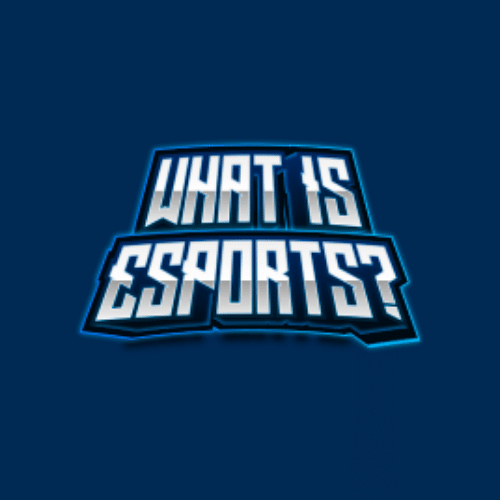Major Milestones in Esports History: A Timeline

Updated On: November 28, 2025 by 
Exploring the rich tapestry of esports history is no small feat, given its ever-shifting landscape. It’s a sentiment many can relate to; finding oneself adrift in the complexities of competitive gaming’s lineage.
Yet, there’s no need for dismay, as our expedition through time uncovers a realm where Space Invaders summoned an army of 10,000 enthusiasts in 1980. Our chronicle meticulously charts pivotal landmarks along esports’ extraordinary evolution from humble arcade origins to the grandeur of international arenas.
Brace yourself for a riveting journey across milestones etched in gaming valour!
The Early Years of Esports
The early years of esports saw the first video game tournament in 1980, marking the beginning of competitive gaming. This era also saw the rise of major events such as Nintendo World Championships and Red Annihilation, establishing a foundation for future esports competitions.
First Video Game Tournament (1980)
In 1980, we bore witness to a monumental event in the evolution of competitive gaming: the very first video game tournament. Space Invaders Championship, hosted by Atari, broke new ground as 10,000 players from across the United States battled for top honours.
This competition not only showcased individuals’ skills but also hinted at the massive potential for future esports events.
This pioneering contest catapulted video games into the realm of competitive sports and paved the way for what we now know as esports. It demonstrated that people’s passion for gaming transcended beyond living rooms and arcades; it was a phenomenon ready to take on a life of its own.
With home consoles gaining popularity around that time, this landmark event signaled an exciting new chapter in gaming history.
Nintendo World Championships (1990)
In 1990, the Nintendo World Championships played a pivotal role in propelling esports into popular culture. This tournament, sponsored by Nintendo, toured across 29 cities in the United States and challenged gamers to compete in a custom game cartridge combining three separate games: Super Mario Bros., Rad Racer, and Tetris.
The competition’s success was evident with more than 1 million participants, showcasing the growing interest in competitive gaming. The event garnered widespread attention and captured the imagination of both passionate gamers and novices alike.
The Nintendo World Championships not only elevated the status of video game tournaments but also cemented Nintendo’s position as a leader in electronic entertainment. This milestone contributed significantly to the legitimacy and recognition of esports as a form of competitive entertainment.
Red Annihilation (1997)
In 1997, Red Annihilation made an indelible mark on the history of esports as it hosted the first-ever competitive gaming event with a grand prize of a Ferrari. This groundbreaking tournament took place in Dallas, Texas and featured Quake, setting the stage for professional teams and players to emerge within the rapidly growing industry.
With this milestone, esports gained recognition as a legitimate form of competition not only among passionate gamers but also mainstream audiences. The significant cash prize and high-stakes nature of Red Annihilation marked a turning point in the development of competitive gaming.
The excitement surrounding Red Annihilation paved the way for future tournaments and laid the foundation for what would become today’s thriving esports landscape. As passionate gamers look back at this major milestone, it serves as a testament to how far esports has come over several decades while igniting enthusiasm among novice players entering this ever-evolving realm.
Cyberathlete Professional League is Founded (1997)
Cyberathlete Professional League, or CPL, was a significant milestone in the evolution of competitive gaming. It provided a platform for gamers to compete at a professional level and paved the way for organised esports tournaments.
With its establishment in 1997, CPL became one of the first organisations to offer substantial cash prizes for skilled players, setting new standards in the industry. The significance of CPL’s founding lies in its contribution towards shaping modern-day esports as we know it today.
The inception of Cyberathlete Professional League marked an essential turning point in the growth and recognition of competitive gaming globally. This step not only laid down the foundation for future esports events but also created opportunities for dedicated players to pursue careers as professional gamers.
Rise of Real-Time Strategy (RTS) and Multiplayer Online Battle Arena (MOBA) Games
Starcraft, released in 1998, revolutionised the esports scene by introducing real-time strategy gameplay and setting the stage for future competitive gaming. To learn more about the major milestones in esports history, keep reading!
Starcraft Released (1998)
Starcraft’s release in 1998 marked a pivotal moment in the history of esports, particularly for real-time strategy (RTS) games. This game garnered widespread acclaim for its immersive gameplay and balanced mechanics, quickly becoming a staple in competitive gaming.
With its intricate strategies and diverse factions, Starcraft set new standards for multiplayer gaming experiences and became an influential title within the burgeoning esports scene.
The release of Starcraft also contributed to the expansion of cybersports by attracting a dedicated player base and fostering a robust competitive community. Its lasting impact is reflected in how it laid the groundwork for future RTS titles while shaping modern esports landscapes.
CPL World Tour (2005)
Following the release of Starcraft in 1998, the Cyberathlete Professional League (CPL) took esports to new heights with the CPL World Tour in 2005. This tournament brought together top gamers from around the world to compete in various locations, showcasing their skills and vying for substantial prize pools.
The CPL World Tour not only elevated the status of professional gaming but also contributed significantly to the global recognition and acceptance of esports as a legitimate and competitive industry.
Esports enthusiasts were captivated by the intense competition and exceptional talent displayed at each stop on the tour. The CPL World Tour reinforced the growing appeal of competitive gaming, cementing its position as a mainstream form of entertainment and solidifying its place in popular culture.
Expansion of Esports
The early 2000s saw the emergence of major international tournaments and gaming leagues, with events like World Cyber Games (2000), Major League Gaming (2002), and the formation of the Korea e-Sports Association (KeSPA) in 2000.
These milestones were crucial in establishing esports as a global phenomenon, attracting top talent and growing its fanbase.
Ready to dive deeper into the history of esports? Keep reading to discover more about how competitive gaming has evolved over time!
World Cyber Games (2000)
World Cyber Games (2000) brought competitive gaming to a global stage. It marked a significant expansion of esports, with players from over 70 countries participating in various game titles like Counter-Strike and Starcraft.
The event’s impact on the growth and development of esports cannot be overstated, as it not only provided a platform for gamers to showcase their skills but also fostered international camaraderie among passionate gamers worldwide.
The World Cyber Games played a pivotal role in elevating the status of esports, shaping it into the phenomenon it is today. With its wide-reaching influence and diverse participation, this landmark event significantly contributed to the evolution and institutionalisation of competitive gaming.
Major League Gaming (2002)
After the establishment of the World Cyber Games, the next major milestone in esports history was the founding of Major League Gaming (MLG) in 2002. This platform quickly became a pivotal force in shaping competitive gaming into what it is today.
MLG provided an organised structure for professional gamers to compete across various titles, giving rise to numerous esports stars and offering substantial prize pools. By solidifying itself as a leading organiser of tournaments and events, MLG significantly contributed to legitimising esports as a mainstream form of entertainment.
As MLG swiftly gained popularity, it fostered further growth within the industry by elevating competitive gaming into a more widely recognised and respected endeavour. With its influential role in establishing standardised rules and regulations for competitions, focusing on titles like Halo: Combat Evolved and Super Smash Bros., Major League Gaming cultivated an environment that propelled esports into the international spotlight.
Formation of KeSPA (2000)
In 2000, the formation of KeSPA (Korea e-Sports Association) played a pivotal role in elevating esports to a professional level. This marked a significant milestone in the growth and recognition of competitive gaming as a legitimate sport.
KeSPA’s establishment not only solidified South Korea’s dominance in esports but also set an example for other nations to follow suit in organising and supporting esports at a national level.
As part of its initiatives, KeSPA standardised rules and regulations for various games, organised tournaments, and established player contracts, thus creating a structured framework for professional players.
Controversies and Recognition
Controversies and recognition have played a significant role in shaping the history of esports, from match-fixing scandals to groundbreaking events like the League of Legends Season 2 World Championship.
These moments have not only driven changes within the industry but have also led to greater recognition and acceptance of esports on a global scale.
Match-Fixing Scandal (2010)
The Match-Fixing Scandal in 2010 shook the esports world, highlighting the growing pains of professional gaming. This controversy involved several high-profile players being implicated in a match-fixing scheme, tarnishing the reputation of competitive gaming.
The scandal brought to light the need for better regulation and integrity measures within esports, prompting organisations and governing bodies to implement stricter rules and monitoring mechanisms to prevent future incidents.
Moving forward from this dark period, the esports community rallied together to promote fair play and transparency. As passionate gamers ourselves, it’s important for us all to uphold the values of sportsmanship and ethical conduct within our beloved industry.
League of Legends Season 2 World Championship (2012)
After the challenging times of the match-fixing scandal in 2010, a pivotal moment emerged in 2012 with the significant League of Legends Season 2 World Championship. This event marked a turning point for esports, as it attracted unprecedented attention and viewership.
With its massive prize pool and global audience, this championship elevated League of Legends to new heights within the esports community.
The League of Legends Season 2 World Championship showcased not only the competitive prowess of top gamers but also laid the foundation for future large-scale esports events. The tournament’s success solidified Riot Games’ position as an industry leader and reinforced League of Legends as one of the most influential games in competitive gaming history.
League of Legends Becomes Olympic Sport (2013)
In 2013, a significant milestone was reached in the history of esports as League of Legends was recognised as an Olympic sport. This recognition marked a crucial point in the evolution of competitive gaming, solidifying its status as a legitimate and respected form of athletic competition.
The inclusion of League of Legends in the Olympics also served to validate the skills and dedication exhibited by esports players, garnering further attention and respect for the industry.
Esports enthusiasts welcomed this development as it signalled a major step towards widespread acknowledgement and acceptance of competitive gaming on a global scale. With League of Legends becoming an Olympic sport, it opened doors for increased opportunities, growth, and exposure for both professional gamers and the broader gaming community.
Recognition of Esports Players as Professional Athletes (2013)
Following the groundbreaking inclusion of League of Legends as an Olympic sport in 2013, a pivotal moment emerged with the recognition of esports players as professional athletes. This milestone not only elevated the status of gamers but also solidified their place within the broader sports community.
With this recognition, esports players gained legitimate acknowledgment for their dedication, skill, and commitment to their craft. The move served to further validate the competitive nature of gaming, signaling a significant shift in how society perceives and values professional gamers.
In response to this landmark development, passionate gamers and those new to the scene embraced the acknowledgement with enthusiasm. The decision bolstered confidence among aspiring esports players and brought newfound attention to pro-gaming careers.
The Future of Esports
Continued growth and development in the esports industry, potential inclusion in traditional sports, the rise of esports betting, and the impact of streaming and sponsorships will shape the future of competitive gaming.
If you want to know more about how these factors will influence the evolution of esports, keep reading!
Continued Growth and Development
Esports has experienced remarkable growth and development, with technological advances propelling the industry forward. The evolution of cybersports over the past decades, from early competitive gaming events to the professionalisation of esports teams and the widespread popularity of worldwide championships, has transformed gaming into a global phenomenon.
The expansion of esports is also evident in its inclusion in major sporting events like the Olympics and recognition of esports players as professional athletes. This continued growth is further fuelled by an audience dominated by specific age groups, shaping trends and driving the future trajectory of competitive gaming.
The rapid increase in viewership, investments, and sponsorships underscores the potential for inclusion in traditional sports. Esports betting is also on the rise, reflecting its commercial viability.
Potential for Inclusion in Traditional Sports
Esports holds the potential for inclusion in traditional sports, marking a significant shift in the gaming landscape. With the rise of competitive gaming and its recognition as a professional sport, there is an increasing overlap between esports and traditional athletic events.
The evolution of cybersports has paved the way for discussions around this integration into mainstream sports, emphasising its growing influence on modern entertainment and leisure activities.
As we delve deeper into the impact of esports on traditional sports, it becomes evident that technological advancements have blurred the distinctions between physical and virtual competitions.
This fusion is shaping new opportunities for collaboration and engagement across different sporting arenas.
Esports Betting
With the increasing popularity and professionalisation of esports, the emergence of esports betting has become a significant trend. As passionate gamers and novice gamers witness the growth of competitive gaming, they are also exposed to opportunities for engagement through betting on their favourite teams and players.
Esports betting not only adds an extra layer of excitement to competitive gaming events but also reflects the evolution and mainstream recognition of esports as a legitimate sport.
This trend is contributing to the continued expansion and commercialisation of esports, attracting attention from a wider audience within the gaming community.
Impact of Streaming and Sponsorships
Streaming and sponsorships have had a profound impact on the growth of esports. With the rise of platforms like Twitch and YouTube Gaming, professional gamers now have the ability to showcase their skills to a global audience in real-time.
This has not only heightened engagement but also attracted substantial sponsorship deals from major brands looking to connect with the gaming community. The accessibility of streaming has allowed fans to immerse themselves in live tournaments and gain insights into top players’ strategies, enhancing their overall experience.
Sponsorships play a pivotal role in sustaining the esports ecosystem, as they provide essential financial backing for events, teams, and individual players. Companies recognising the potential reach of esports are investing heavily in partnerships with gaming organisations and personalities.
Conclusion
In conclusion, the history of esports is filled with influential moments that have shaped the industry into what it is today. From the first video game tournament in 1980 to the recognition of esports players as professional athletes in 2013, each milestone has contributed to its growth and popularity.
As technology continues to advance, and as more people become involved in competitive gaming, the future of esports holds endless potential for both players and fans alike. With ongoing development and inclusion in traditional sports, along with a rapidly expanding audience base, the impact of esports on global entertainment cannot be underestimated.
FAQs
1. What are the origins of esports?
The origins of esports trace back to early competitive events in gaming, where players gathered to compete in video games.
2. How has the evolution of gaming impacted competitive events?
As gaming has evolved, it has driven the growth and sophistication of competitive events, turning them into organised tournaments that we see today.
3. Can you give examples of competitive gaming milestones?
Key milestones include the first major tournaments, the rise of global competitions and leagues, and breakthroughs in technology that have enhanced player experiences.
4. What does a timeline of Major Milestones in Esports History show us?
A timeline shows us how far esports has come from its humble beginnings to becoming a worldwide phenomenon with millions following and participating in these competitive gaming events.


